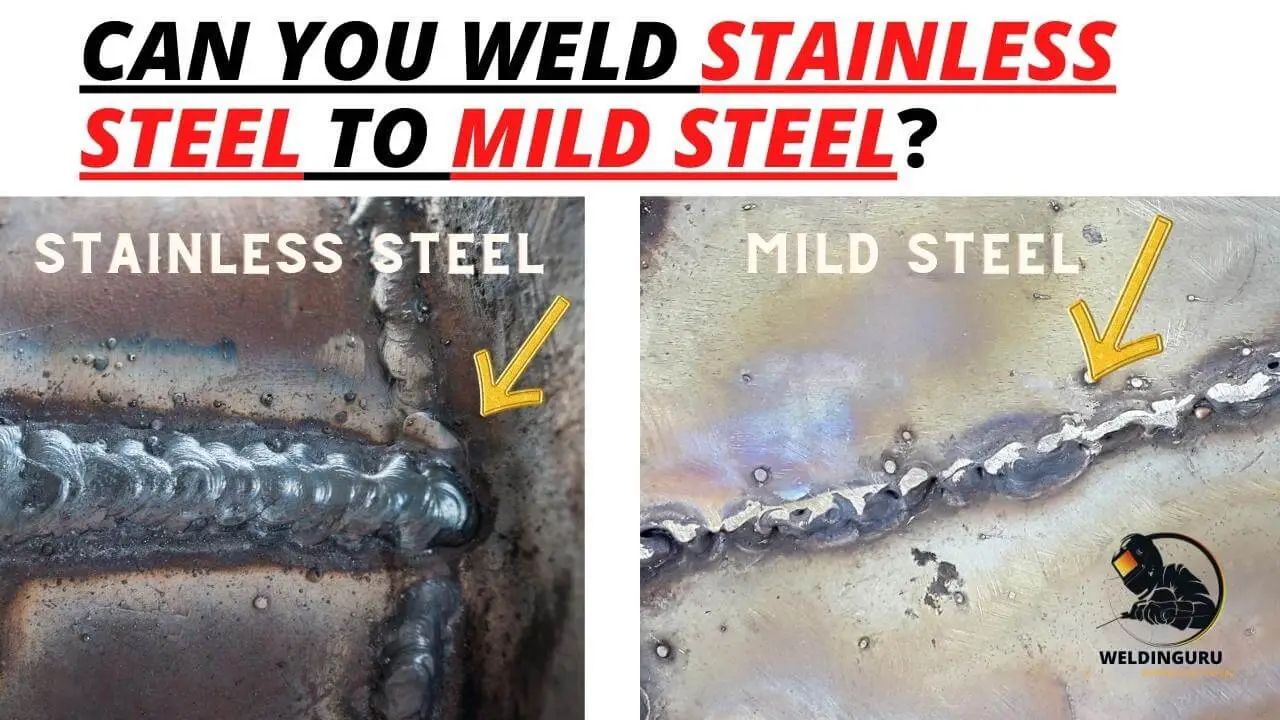Welding stainless steel to mild steel is a process involving the joining of two different types of metal, each with its own specific characteristics.
The result is a joint that is stronger than either of the components involved and resistant to corrosion.
I am going to be talking about one of the most common questions welders have. Can you weld stainless steel to mild steel?
This question is especially common among someone who has just started learning to weld. So, it is essential for you to know about the complete procedure & other important things about welding stainless steel to mild steel.
Can You Weld Stainless Steel To Mild Steel?
Yes, you can weld stainless steel to mild steel. Stainless steel is made from a different type of alloy than mild steel, so it does not melt at the same temperature. To weld stainless steel to mild steel, you need to use a filler metal that melts at a lower temperature than the base materials being worked on.
When welding stainless steel to mild steel, it’s important to make sure that your equipment is properly set up and maintained so that your welds will be strong and last a long time without breaking or cracking.
In the remaining article, I will tell you different ways to weld stainless steel to mild steel, the pros & cons of welding stainless steel to mild steel, and more about this, so keep reading!
Welding Stainless to Mild Steel with Flux Core
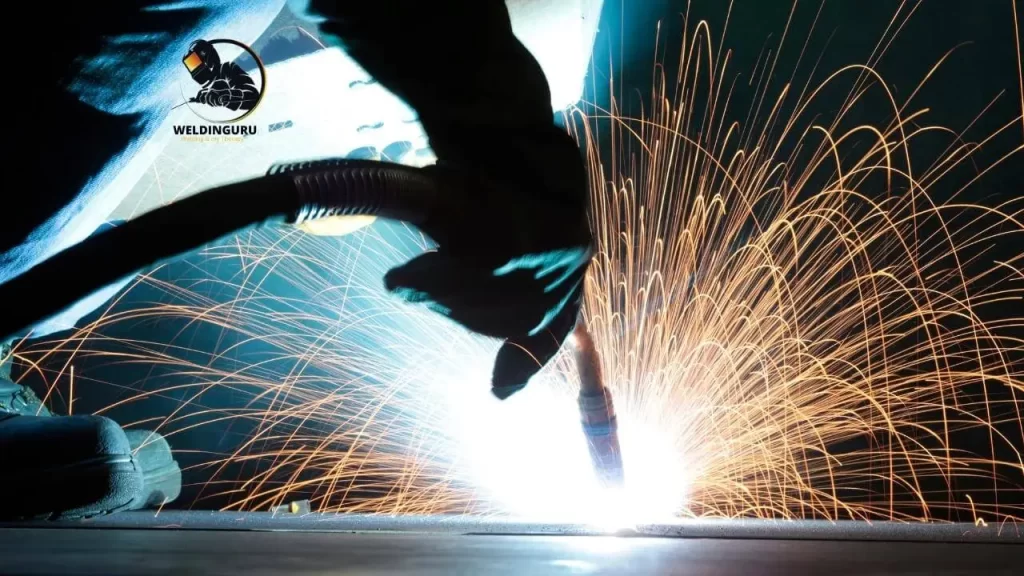
Welding stainless to mild steel with a flux core is a great way to create a strong weld.
It is important to ensure that the two pieces of metal you are welding are clean and free from any oils or contaminants. You will also need to clean the face of your torch tip, as well as any other parts of the torch that will be in contact with the metal.
When welding stainless steel to mild steel, it is best to use an aluminum backing plate on the piece of stainless steel being welded. This helps prevent warping or distortion of the stainless steel, which can occur if it is not supported during welding.
When using flux core wire for this type of welding, it’s important that you follow manufacturer instructions closely so that you don’t damage equipment or injure yourself while working with dangerous gases like CO2 and hydrogen fluoride (HF).
For welding stainless to mild steel with the help of a flux core, I personally recommend using 309L flux core wire.
Difference Between Stainless Steel & Mild Steel
The difference between stainless steel and mild steel is that stainless steel has a higher chromium content than mild steel. It also contains nickel and other elements. Stainless steel is used in applications such as tableware, cookware, surgical instruments, and parts of aircraft.
Mild steel has a lower chromium content than stainless steel. It lacks nickel and other elements which are found in stainless steel. Mild steel is used in applications such as cars, trucks, farm machinery, and ships.
Welding Stainless to Mild Steel with 7018
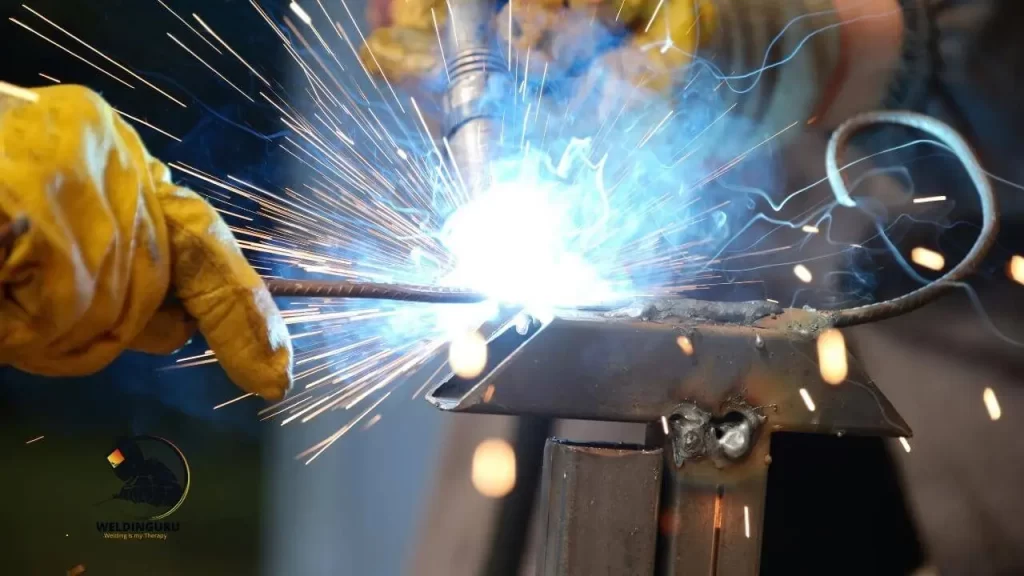
Welding stainless to mild steel with 7018 is an interesting challenge because the steel and the stainless have vastly different melting points.
The mild steel will melt at around 1400 degrees Fahrenheit, while the stainless will begin to boil at about 1875 degrees Fahrenheit.
In order to get a good weld, you need to be able to heat both pieces of metal equally. This can be done with a torch that has dual tips, one for each metal, and it can also be done by using a flux wire that covers both sides of your joint.
The flux wire is used to protect the metal’s surface from oxidation during welding. You’ll want to apply it wet so it creates an insulating barrier between your two pieces of metal.
It should also be applied as close as possible to where you’re going to be welding so that it doesn’t burn off before you get there!
After applying the flux wire, turn on your torch and begin heating up both pieces of metal until they reach their respective melting points.
After this happens (you’ll know when), use your solder rod (or whatever other type of filler material you’re using) and create a strong bond between them.
Also See: How to Weld Titanium?
2 Ways to Weld Stainless Steel to Mild Steel: MIG & TIG
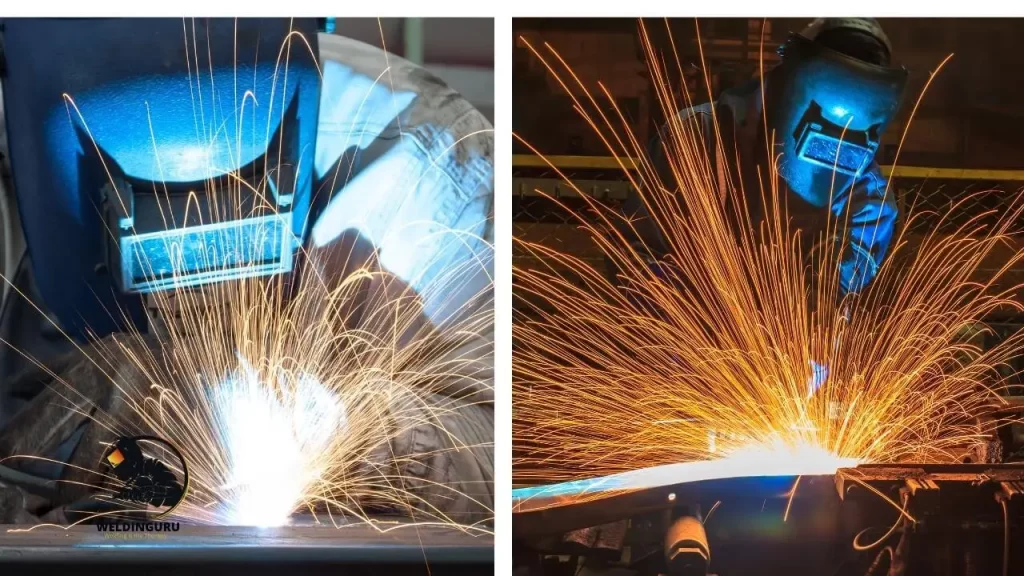
Welding stainless steel to mild steel is a common task in any shop. When you’re welding these two metals together, I recommend using the MIG or TIG welding approach for better results.
Now, I will tell you about the way of welding stainless steel to mild steel by using the MIG & TIG welding approach.
MIG Welding Stainless Steel to Mild Steel
MIG welding stainless steel to mild steel is a great way to create sturdy, durable structures that are resistant to rust and corrosion.
Here are some steps you can follow:
- Prepare your work area by cleaning it thoroughly and removing any debris or oil from the surfaces you’ll be welding.
- Grind down any burrs or sharp edges on the stainless steel piece, and do the same with the mild steel piece you’ll be welding together. The two should be nearly flush with each other so that they can be easily joined with a single weld.
- Clean both pieces of metal thoroughly with a degreaser or acetone before setting up your welder and gas tank. Make sure everything is dry before starting!
- Set up your welder according to the manufacturer’s instructions and attach a spool of MIG wire (available at most hardware stores). Remember to wear protective eyewear throughout this process!
- Connect your ground clamp to one end of your workpiece and ensure that it is securely grounded outside of your work area (not in contact with any other metal). This will help prevent shocks from occurring during operation as well as increase safety for those nearby when working on high-voltage equipment like this one!
TIG Welding Stainless Steel to Mild Steel
- Make sure your filler rod and tungsten are fresh.
- Clean the stainless steel with a stainless steel abrasive brush; then clean it again with a stainless steel scrub pad and solvent, and let it dry completely before welding.
- Set your voltage to match that of the mild steel you’re going to weld to. (Most mild steels are around E6013.)
- Set your amperage to 9-12, depending on the thickness of the metal you’re working with and how much penetration you want in your welds.
- Hold down on the pedal for 30 seconds after striking an arc, then move your torch back and forth over the joint in smooth, consistent motions until you’ve reached your desired depth of penetration in one pass. If you want more than one pass at a time, hold down on your foot pedal for another 30 seconds after each pass before repeating.
- If you want to make sure your welds are good quality, inspect them with a magnifying glass or microscope after they cool down completely!
What Do We Mean by Weldability?
The concept of weldability is a complex one.
Weldability refers to the ability of a metal to form a strong bond with another metal when they are melted together. It is important to determine whether or not a material is suitable for welding.
In general, high-quality steel is more weldable than low-quality steel. This is because it has fewer impurities and can be melted at higher temperatures without losing its strength.
Some materials are not weldable at all—these include some types of plastic, wood, and ceramics. However, there are some materials that are so brittle that they cannot be welded either.
The most important factor in determining whether or not a material will be weldable is its composition, that is, what percentage of each element it contains and what chemical compounds these elements form when they combine with other elements in nature (e.g., magnesium oxide).
Is it Possible to Weld Stainless Steel to Carbon Steel?
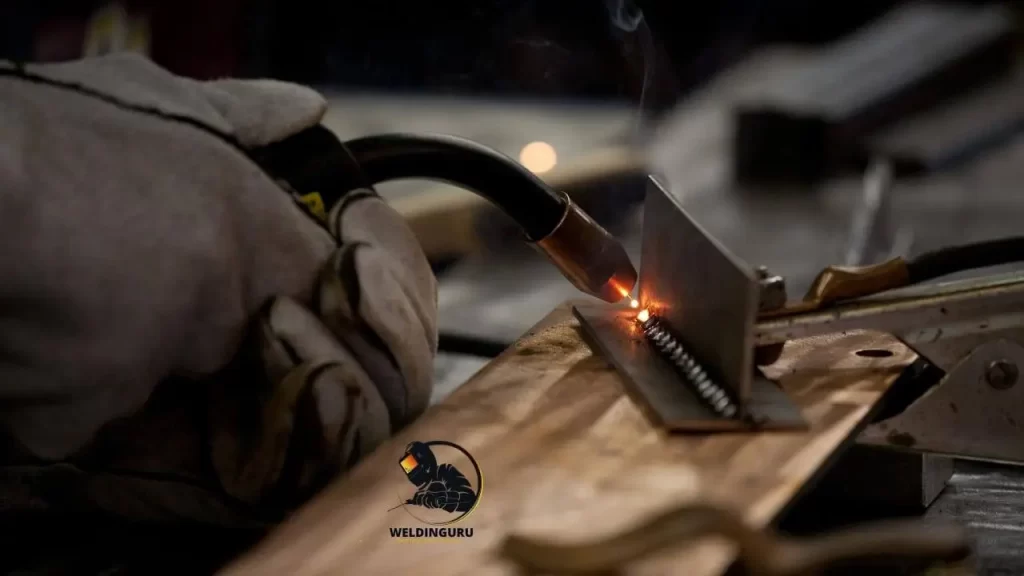
Welding stainless steel to carbon steel is possible, but I do not recommend it. While you can weld stainless steel to carbon steel, the joint won’t be as strong as one that’s made with the same metal.
You should also keep in mind that different types of stainless steel have different properties, so if you’re using a type of stainless steel that’s softer than your carbon steel, there’s a chance that the weld will fail under stress.
If you want to use a welding technique other than arc welding, you’ll need to use a filler rod made from a different metal. For example, if you’re using an acetylene torch and want to weld carbon steel with stainless steel, you can use a filler rod made from nickel-based alloy or nickel-aluminum alloy.
Welding Rod & Filler for Welding Stainless Steel
This is a question that can be answered in many different ways depending on the type of steel that you are trying to weld.
If you are welding stainless steel, then you will want to use a filler rod that is made of nickel or cobalt alloys. This type of filler rod will provide a stronger bond than other types of filler materials and will be able to withstand the high temperatures needed for this type of welding.
The most common types of stainless steel include 304, 316, and 410. These are generally referred to as 18-8 austenitic stainless steels, which means they contain 18% chromium and 8% nickel.
The other two types of stainless steel are martensitic and ferritic, but these are less common because they require special processes and equipment for fabrication.
Also See: Types of Welding Positions
Precautions to Follow While Welding Stainless Steel
Welding stainless steel to mild steel is a common task that many welders perform on a regular basis. While the process itself is not too difficult, there are some precautions you should take to ensure that your welding project is successful.
- First, make sure that you are using the correct type of welding rod for the job. There are many types of stainless steel and mild steel, so be sure you have chosen the right one for your project.
- Second, consider using filler metal when welding stainless steel to mild steel. Filler metal will help prevent cracking or other damage to your finished product.
- Clean the surface of your stainless steel before welding it to mild steel. Be sure that your surface is free of any dirt or oil, and other contaminants that might interfere with the weld.
- Clean both sides of the joint with a wire brush before welding. This will remove any dirt or grease so that they do not interfere with your welds.
- Make sure that your equipment is up-to-date and properly calibrated before beginning any type of welding project. You’ll want to make sure that all of your tools are functional so that they can get the job done quickly without having any major issues along the way.
- Always wear protective gear! This includes gloves, boots, and long sleeves if possible – anything else could get caught in the sparks created by an arc-welding tool which could cause burns on exposed skin areas like hands or arms if touched accidentally while working on site!
Advantages of Welding Stainless Steel to Mild Steel
Welding stainless steel to mild steel can be a great solution for many projects. It offers a number of advantages and benefits, such as:
Cleaner Welding:
With conventional welding processes, you have to be careful not to contaminate the area where you’re working with fumes or dust particles from the weld material. With stainless steel welding processes, this isn’t an issue—you don’t have to worry about any sort of contamination or smoke leaving behind residue on your project.
More Consistent Results:
If you’re trying to create a specific look with your work, having consistent results is essential. Welding stainless steel will help ensure that every piece looks exactly like the one before it did when it comes out of the machine.
Stronger Welds:
The weld is stronger than the base metal. The high chromium content of stainless steel allows it to form a protective coating on the weld that is more resistant to corrosion than the base metal. This is especially important when working with mild steel because it is more prone to rusting than stainless steel.
Seamless Surface:
Welding stainless steel to mild steel makes it possible to create shapes that would be difficult or impossible with conventional welding methods. For instance, you could use this technique to create a seamless surface on an item where there are no seams or gaps between pieces of material.
Better Results:
This process can be used to join two different types of metal together without melting them down entirely into a single piece, as traditional welding methods would require.
This makes it easier for you to work with different kinds of metals without having them melt together into one solid piece during the process of welding those materials together.
Disadvantages of Welding Stainless Steel to Mild Steel
Welding stainless steel to mild steel has many advantages, but it also has a few disadvantages. I will highlight some of the disadvantages as follows:
- You will need special equipment to do it because stainless steel requires a different welding process than standard steel.
- You will also need special materials, such as fluxes and rods, that help to prevent corrosion during the process.
- Welding stainless steel to mild steel is more difficult because the two metals react differently when they are joined together by heat, which causes them to expand at different rates during cooling and contraction, respectively.
- Another disadvantage of welding stainless steel to mild steel is that their different composition means that they have different melting points, which makes it difficult for the weld to form properly.
- Another problem is that stainless steel and mild steel expand at different rates as they heat up, which can cause cracks in your welds.
Final Words!
Can you weld stainless steel to mild steel? So, based on the information you’ve learned in this article, it would seem that, yes, you can weld stainless steel to mild steel.
However, there are some things that we should point out. The first is that you should take special care when purchasing any type of wire for MIG welding stainless steel (this applies to other types of wires as well).
You’ll want to make sure that your wire is designed for use and that not just any old type of wire will do. This usually means buying a more expensive type specifically designed for use with welding stainless steel.
FAQs:
What rod do you use to weld stainless to mild steel?
309L-16 rod is used to weld stainless steel to mild steel. This rod can be used for welding various grades of stainless materials such as 304, 316, and 321. It is an excellent choice where high pulse strength is needed. This type of rod shows excellent arc starting and arc stability which gives it the ability to weld almost all types of stainless steel applications.
Can you spot-weld mild steel to stainless steel?
Spot welding stainless steel to mild steel requires careful planning and the use of the proper filler metal. Although there are several ways to do this, some methods work better than others. Because these types of welds require metal that is not hard enough to melt both materials simultaneously, their strength depends on a high transfer of heat to the base material. The key to accomplishing this is using a filler metal that has the same coefficient of thermal expansion (CTE) as the base metal. To do this successfully, you’ll need to know your materials well before you begin.
Can you weld stainless to mild steel with a stick welder?
Yes, you can weld stainless to mild steel with a stick welder. Mild steel and stainless steel are both ferrous metals, so they will bond when heated in the same tip. For example, if you’re forming a dinghy for your sailboat, you could use thick-walled stainless tubing as the bottom, then put a 1/4″ aluminum sheet on top. If you need to tack weld this joint for any reason, it is possible to use one type of welding rod for both materials.
